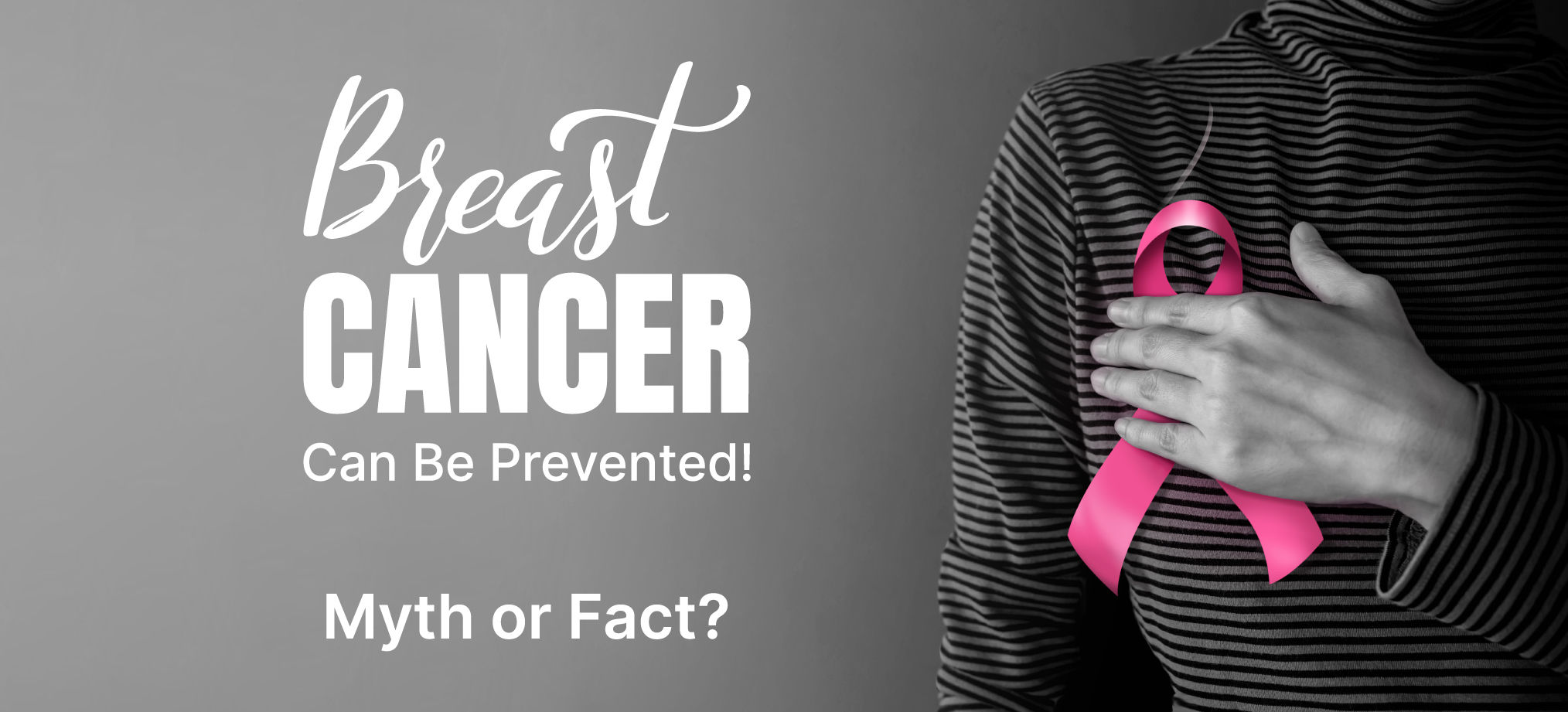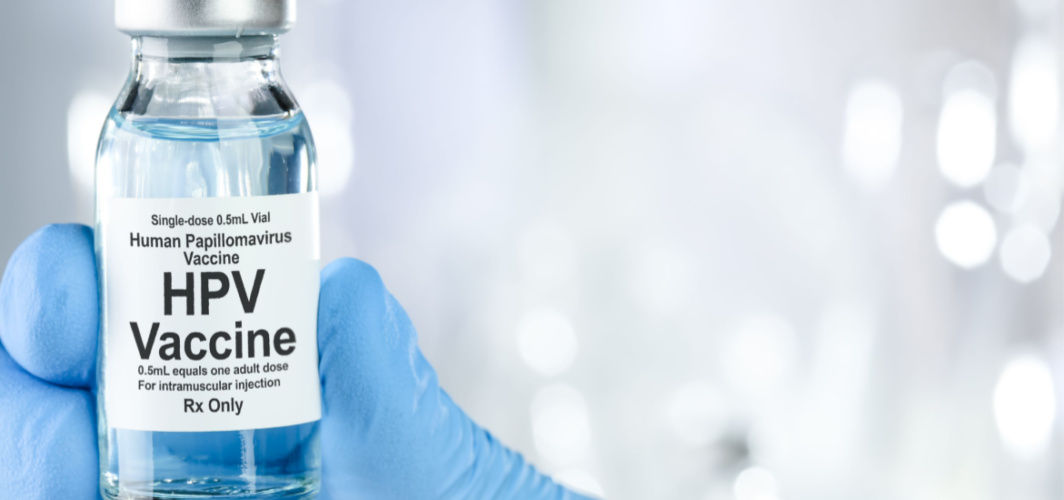Women's Wellness
Can Breast Cancer Be Prevented?
5 min read
By Apollo 24/7, Published on - 22 December 2021, Updated on - 22 May 2024
Share this article
1
0 like

While most breast lumps are harmless, some of them could be an indication of breast cancer. Breast cancer is the most commonly detected cancer in women across the globe. As per the World Health Organization (WHO), in 2020, 2.3 million cases of breast cancer were reported in women globally. However, awareness and preventive measures can help reduce the risk of breast cancer significantly.
Who can be at risk of developing breast cancer?
Breast cancer is a disease characterised by the excessive growth of abnormally functioning cells in the breast. Though found in women aged 50 years or above, younger individuals can also develop breast cancer. Factors that may increase the risk include:
- Family history: Women with a family history of breast cancer are at increased risk of developing the disease as the cancerous DNA (BRCA1 and BRCA2 gene) can be passed onto the next generation.
- Medical history of cancer: Women with a history of cancer or those who have undergone radiation therapy previously are more likely to develop breast cancer.
- Thick breast tissue: The human breast is made up of fat, fibre and glandular (gland-containing) tissues. When the amount of fibrous and glandular tissue increases, the breast tissue gets dense and the risk of cancer increases by 2 folds.
- Unhealthy lifestyle: Excessive intake of alcohol, physical inactivity, obesity, and being overweight may increase the risk of developing breast cancer.
- Using birth control measures: Use of oral contraceptives, injectable birth control, implants, intrauterine devices (IUD), and vaginal rings have been associated with an increased risk of breast cancer.
- Hormone therapy: Hormone replacement therapy (HRT), given to reduce the symptoms of menopause, might increase the risk of breast cancer.
Recommended read: The Most Common Cancers Affecting Women
How can one lower their risk of breast cancer?
Since the exact cause of breast cancer is not known, prevention is not entirely possible. However, ways that may help reduce the risk of developing the condition include:
- Genetic counselling: Women with a family history of breast cancer should visit a genetic counsellor to determine if they need to undergo breast cancer screening.
- Annual breast screening: Women over the age of 35 years should get a mammogram (an x-ray of the breast) at least once a year as it helps in detecting abnormal changes in breasts early on.
- Consume a healthy diet: Limited evidence has shown that a diet high in fruits, vegetables, and dairy products, but low on fat, red meat, and sugary foods, can help reduce the risk of developing breast cancer.
- Exercise regularly: Women must maintain a healthy weight, especially after menopause. Therefore, it is advised that women should practise moderate-intensity exercises such as brisk walking, swimming, or cycling for at least 3 to 5 hours a week.
- Avoid or limit alcohol intake: While it would be ideal to quit the consumption of alcoholic beverages, women who drink are advised to not consume more than one drink a day.
- Perform a self-breast exam: Self-examining the breast can help in identifying any unhealthy changes in the breast at an early stage, thus improving the survival rate.
How to perform a breast exam?
Breasts can be of different shapes and sizes. Women should perform a self-breast exam occasionally to understand the way their breast looks and feels so that any abnormal changes are easily detected. Here are the steps to performing a simple self-breast exam at home:
- Step 1: Remove clothes from the upper half of the body and stand in front of the mirror. Keep your hands on the hips, and then raise them high overhead and lastly, rest them at the back of your head. Look for any change in the size, shape and colour of the breast in all three postures.
- Step 2: Use the pad of the first three fingers of your left hand to examine the right breast. Using a circular motion, press every part of the breast with firm pressure. Look for any lumps, hard spots or any discharge while pressing the breast. Also, press the tissue under the armpit to check for any swollen nodes. Repeat the same motion with the finger pads of the right hand to examine the left breast.
- Step 3: Now lie down flat on your back to spread the breast tissue evenly. Repeat the same motion to detect any changes in both breasts.
- Step 4: Do not forget to check the areola (the dark area around the nipples). Lastly, squeeze the nipples gently to check for any discharge.
When to consult a doctor?
One must contact a doctor if they witness:
- Redness, rashes, crusting, or dimpling (appears like the surface of an orange peel) in the breasts
- Change in the size, shape, or position of the nipples
- Lumps, nodes or a hard knot in any part of the breasts
- A white, yellow coloured or colourless discharge from the nipples
- New and persistent pain in the breast
Conclusion
Breast cancer is one of the five most life-threatening cancers in the world. While breast cancer cannot be prevented completely, maintaining a healthy weight, consuming a balanced diet, performing regular self-breast exams, and getting an annual breast screening can help reduce the risk of developing the condition significantly.
Have more doubts?
Leave Comment
Recommended for you

Women's Wellness
HPV Vaccine: Four Important Reasons To Get The Human Papillomavirus Vaccine Shot
The HPV vaccine can help prevent cervical and other types of cancer linked to Human Papillomavirus - a sexually transmitted virus. The article explores the benefits of the HPV vaccine in detail.

Women's Wellness
Eating Disorders: Why Women Are More Affected
If not diagnosed or treated, eating disorders can cause severe damage to the digestive system, heart, bones, teeth, and other vital organs.

Women's Wellness
Top 5 Benefits Of Breastfeeding For Mother And The Baby
While breastfeeding is considered extremely important for infants, it has various health benefits for the mother as well. Read to know more.
Subscribe
Sign up for our free Health Library Daily Newsletter
Get doctor-approved health tips, news, and more.
Recommended for you

Women's Wellness
HPV Vaccine: Four Important Reasons To Get The Human Papillomavirus Vaccine Shot
The HPV vaccine can help prevent cervical and other types of cancer linked to Human Papillomavirus - a sexually transmitted virus. The article explores the benefits of the HPV vaccine in detail.

Women's Wellness
Eating Disorders: Why Women Are More Affected
If not diagnosed or treated, eating disorders can cause severe damage to the digestive system, heart, bones, teeth, and other vital organs.

Women's Wellness
Top 5 Benefits Of Breastfeeding For Mother And The Baby
While breastfeeding is considered extremely important for infants, it has various health benefits for the mother as well. Read to know more.